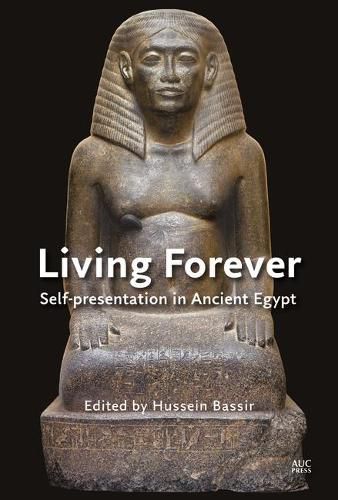Readings Newsletter
Become a Readings Member to make your shopping experience even easier.
Sign in or sign up for free!
You’re not far away from qualifying for FREE standard shipping within Australia
You’ve qualified for FREE standard shipping within Australia
The cart is loading…






Self-presentation is the oldest and most common component of ancient Egyptian high culture. It arose in the context of private tomb records, where the character and role of an individual-invariably a well-to-do non-royal elite official or administrator-were presented purposefully: published by inscription and image, to a contemporary audience and to posterity.
Living Forever: Self-presentation in Ancient Egypt looks at how and why non-royal elites in ancient Egypt represented themselves, through language and art, on monuments, tombs, stelae, and statues, and in literary texts, from the Early Dynastic Period to the Thirtieth Dynasty. Bringing together essays by international Egyptologists and archaeologists from a range of backgrounds, the chapters in this volume offer fresh insight into the form, content, and purpose of ancient Egyptian presentations of the self. Applying different approaches and disciplines, they explore how these self-representations, which encapsulated a discourse with gods and men alike, yield rich historical and sociological information, provide examples of ancient rhetorical devices and repertoire, and shed light on notions of the self and collective memory in ancient Egypt.
$9.00 standard shipping within Australia
FREE standard shipping within Australia for orders over $100.00
Express & International shipping calculated at checkout
Self-presentation is the oldest and most common component of ancient Egyptian high culture. It arose in the context of private tomb records, where the character and role of an individual-invariably a well-to-do non-royal elite official or administrator-were presented purposefully: published by inscription and image, to a contemporary audience and to posterity.
Living Forever: Self-presentation in Ancient Egypt looks at how and why non-royal elites in ancient Egypt represented themselves, through language and art, on monuments, tombs, stelae, and statues, and in literary texts, from the Early Dynastic Period to the Thirtieth Dynasty. Bringing together essays by international Egyptologists and archaeologists from a range of backgrounds, the chapters in this volume offer fresh insight into the form, content, and purpose of ancient Egyptian presentations of the self. Applying different approaches and disciplines, they explore how these self-representations, which encapsulated a discourse with gods and men alike, yield rich historical and sociological information, provide examples of ancient rhetorical devices and repertoire, and shed light on notions of the self and collective memory in ancient Egypt.